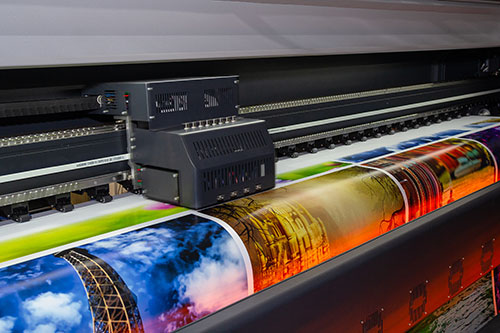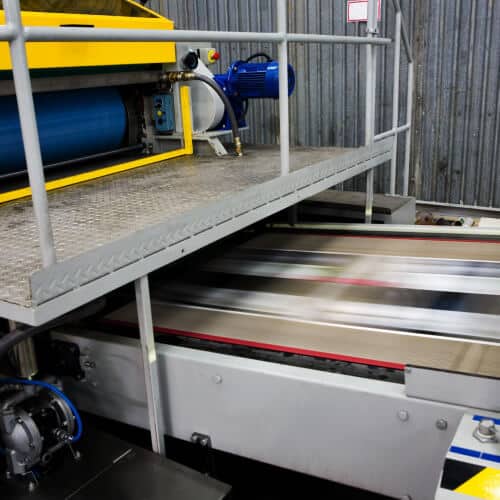Packaging Design Perks with litho printing Techniques
Wiki Article
The Necessary Guide to Recognizing Litho Printing and Its Applications
Litho printing stands as a considerable method in the printing market, rooted in the principles of oil and water repulsion. This method not just supplies premium pictures yet likewise satisfies different industrial demands. Its applications range from advertising and marketing products to product packaging, showcasing its convenience. As the industry adapts to brand-new technologies, the development of litho printing increases questions concerning its future and relevance in an electronic landscape. What lies in advance for this sustaining method?
What Is Litho Printing?
Litho printing, a widely used printing method, counts on the concept of oil and water repulsion. This approach utilizes a flat printing surface area, commonly a steel plate, which is dealt with to assure that the photo locations are receptive to oil-based inks while the non-image areas repel them. The procedure starts with the creation of a photo on home plate, usually via illustration or photo methods. As soon as the picture is prepared, the plate is wetted with water, complied with by the application of ink. The ink adheres only to the image locations, enabling accurate reproduction of graphics and message. Litho printing is favored for its ability to produce top notch prints with fine information and vivid shades. It is typically made use of in industrial applications, consisting of papers, publications, and product packaging, showcasing its flexibility and efficiency in meeting the needs of modern-day printing.The Background of Lithography
Lithography is a modern printing staple, its origins trace back to the late 18th century when German playwright Alois Senefelder invented the method in 1796. Created as an approach for replicating texts and photos, lithography made use of a level rock surface to create prints through a chemical procedure. Senefelder's development enabled higher adaptability and creative expression contrasted to previous printing methods.By the 19th century, lithography gained extensive approval, ending up being a popular selection amongst musicians and publishers. It made it possible for the mass manufacturing of illustrations, maps, and posters, especially impacting the printing industry. The technique better developed with the introduction of lithographic presses, enhancing effectiveness and quality.As the commercial revolution advanced, lithography adjusted to meet the needs of business printing, leading the way for contemporary applications. Today, it remains a crucial strategy in numerous markets, consisting of posting, product packaging, and great art recreation.Exactly How Litho Printing Works
A crucial attribute of litho printing is its dependence on the principle of oil and water repulsion - litho printing. In this process, pictures are transferred from a level surface, commonly a steel or polymer plate, to paper. The plate is dealt with to make sure that the areas intended for printing bring in ink, while the non-image areas repel it due to their affinity for water. The printing begins by dampening home plate with water, which abides by the non-image areas. Consequently, an oil-based ink is applied, sticking only to the desired picture areas.When the plate comes into call with the substrate, the ink is transferred, developing a print. The litho printing procedure is qualified of generating premium photos with fine information. It is frequently utilized for mass production as a result of its performance and consistency, making it a preferred approach for business printing applicationsAdvantages of Litho Printing
One noteworthy advantage of litho printing is its capacity to create premium images regularly, making it an optimal option for commercial projects. This printing method uses a level printing plate, making sure also ink distribution and sharp details. Litho printing is likewise renowned for its color precision, allowing vivid and true-to-life reproductions, which is important for branding materials.Moreover, it sustains a broad selection of substratums, consisting of paper, cardboard, and even particular plastics, enhancing its convenience. The process is economical for large runs, as economic situations of scale lower per-unit expenses. Furthermore, litho printing has a fast turnaround time, enabling reliable production schedules.Its durability additionally suggests that printed materials resist fading, making certain that the end product keeps its aesthetic appeal over time. Generally, these benefits make litho printing a recommended option across various industries, adding to its long-lasting appeal.
Applications of Litho Printing in Company
As services increasingly look for dependable and high-grade printing options, litho printing emerges as a crucial gamer in various applications. This strategy is especially favored for creating advertising materials such as sales brochures, flyers, and catalogs, many thanks to its capacity to provide vivid shades and sharp photos. On top of that, litho printing is frequently utilized for packaging services, enabling companies to produce eye-catching tags and boxes that boost product appeal.In the sector of corporate identity, litho printing contributes in producing expert stationery, calling card, and marketing goods, which aid enhance brand name acknowledgment. Moreover, it is extensively utilized in the posting sector for published products such as books and publications, where regular high quality is extremely important. Generally, litho printing's convenience and performance make it a necessary device for services aiming to communicate effectively and establish a solid market presence.Artistic Use Litho Printing
Litho printing acts as a flexible medium in the domain of printmaking, offering musicians a distinct approach to express their creative thinking. This strategy see post permits a vast array of imaginative applications, from typical prints to contemporary interpretations. By exploring the subtleties of litho printing, artists can harness its distinctive top qualities to improve their work.
Printmaking Methods Review
The visit here virtuosity of printmaking includes a varied variety of techniques, with litho printing standing out for its special method to image production. This method relies upon the concept of oil and water repulsion, enabling musicians to draw directly onto a limestone or steel plate with a greasy medium. When prepared, the plate is moistened and tattooed, moving the image onto paper via pressure. Litho printing is celebrated for its capacity to create great information and rich tonal variants, making it a popular option among artists. Furthermore, the procedure is flexible, accommodating both standard techniques and modern adjustments. This versatility allows litho printing to bridge different creative designs, enhancing the printmaking landscape with its distinct qualities and capabilities.Distinct Artistic Applications
Exploring the one-of-a-kind creative applications of litho printing reveals its amazing flexibility in various imaginative areas. Musicians use litho printing to develop complex styles and structures, enabling meaningful and thorough jobs. The procedure facilitates the recreation of brilliant colors, making it excellent for images and art prints. Many modern artists welcome lithography for its capacity to integrate standard strategies with modern concepts, resulting in innovative art work. In addition, litho printing is frequently utilized in the production of restricted version prints, boosting their value and appeal. The tactile top quality of litho prints includes a distinctive dimension, attracting enthusiasts and art enthusiasts alike. On the whole, litho printing stays a substantial medium for creative expression, bridging classic techniques with contemporary creativity.The Future of Litho Printing in a Digital World
As additional reading the printing sector evolves, litho printing deals with the challenge of incorporating digital modern technologies to continue to be pertinent. Strategies concentrated on electronic assimilation, alongside trends in sustainability and technology, will shape its future - litho printing. Understanding these dynamics is important for sector stakeholders wanting to adapt to a swiftly altering landscapeDigital Integration Approaches
An expanding variety of litho printing firms are accepting electronic integration techniques to stay competitive in a significantly electronic landscape. By including digital operations, these firms can streamline processes and enhance performance. This integration permits for real-time information administration and boosted communication in between departments, decreasing turn-around times noticeably. Additionally, electronic devices allow much better customization and personalization of published products, dealing with specific client needs. Firms are additionally adopting hybrid printing remedies that combine conventional litho methods with digital innovations, providing adaptability in manufacturing. Moreover, leveraging information analytics assists in comprehending market trends and customer choices, enabling organizations to make educated choices. Generally, electronic combination is becoming important for litho printing companies intending to innovate and react to advancing market demands.Sustainability and Advancement Trends

Often Asked Inquiries
What Products Are Generally Used in Litho Printing?
The materials commonly utilized in litho printing consist of aluminum plates, ink, water, and paper. Each part plays an important function in the printing procedure, ensuring top quality photo reproduction and reliable transfer of ink onto the substratum.Exactly How Does Litho Printing Compare to Digital Printing?
Litho printing provides superior shade consistency and quality for big runs, while electronic printing masters short runs and modification. Each approach has distinctive benefits, accommodating different needs based on production scale and cost-efficiency.What Is the Regular Turnaround Time for Litho Printing Projects?
The regular turn-around time for litho printing tasks varies, typically varying from a few days to numerous weeks. Aspects affecting this timeframe consist of job complexity, quantity, and required completing processes, affecting total manufacturing schedules.Can Litho Printing Accommodate Customized Sizes and Formats?
Litho printing can without a doubt suit custom-made dimensions and layouts, enabling flexibility in design. This versatility makes it possible for customers to achieve special print outcomes tailored to their particular needs, enhancing the total performance of their projects.What Are the Environmental Impacts of Litho Printing?
The environmental effects of litho printing consist of source usage, chemical usage, and waste generation. Nevertheless, improvements in sustainable practices and environment-friendly materials are gradually minimizing these negative impacts, promoting a much more eco liable technique to printing.Report this wiki page